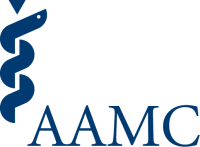
Hopefully, many of you have already read the data snapshot we released this spring on the training location preferences of senior medical students in the wake of the U.S. Supreme Court’s Dobbs decision. I also recently authored a JAMA perspective on how abortion restrictions are likely to affect the health of patients beyond just women of reproductive age.
When we first established the AAMC Research and Action Institute more than two years ago, I didn’t expect to be writing anything about the reversal of Roe v. Wade (or spending more time on the workforce research I first tackled almost 20 years ago).
Today, we’re publishing a paper by our first fellow in residence, Gaetano Forte, from the Center for Health Workforce Studies at the University of Albany, SUNY, about whether it’s worth doing workforce projections to begin with ... (spoiler alert — yes, it is).
Over the past two years, our small team has worked with many collaborators and advisors to produce more than a dozen publications that have raised both long-term issues in health policy (health care costs, the challenges of "price" and "cost" comparisons) and pressing issues such as those related to COVID-19 (testing, capacity, pandemic preparedness).
We’ve also tried to bring some clarity to the recurring discussions about the ongoing crisis in mental health and how best to define "value" in health care.
Along the way, our work has been highlighted in major press outlets, including The Washington Post and CNN, and in published opinion pieces in JAMA, STAT News, and USA TODAY, and it’s been cited by well-established think tanks. Our work has led to requests for discussions with colleagues in Congress, the U.S. Department of Health and Human Services, the Centers for Disease Control and Prevention, the National Institutes of Health, the Centers for Medicare & Medicaid Services, the Food and Drug Administration, and other government agencies and to collaborations with organizations like the Alliance for Health Policy to determine steps that will realistically improve mental health for millions of people in the next 1 to 2 years.
You can read more about our work.
I hope the institute is contributing to the health policy discussion in a few important ways. We strive to be:
- To the point — Our work is easy to read and understand — and shorter than most, like CliffsNotes versions of highly referenced academic pieces with a touch of real-world pragmatism.
- Relevant — Our work illuminates the issues that require policy attention in real time (including new and ongoing problems).
- Solution focused — Our work clearly defines problems and identifies the incremental steps most likely to lead to improvements in health and health care.
I think we’re getting there and I’m excited about our upcoming agenda, which will include a few urgent issues. We’ll be defining the concrete challenges in caring for rural populations in an era of changing technology and science; better understanding the policy levers (beyond clinical infrastructure) that can be pushed to change health outcomes and improve equity; and working with RAND and our AAMC colleagues on creating new projections of (and ways to think about) the health care workforce.
Please send me your thoughts/critiques/concerns if you’re so inclined. I’d love to hear your ideas about what we can do to make our work as valuable and visible as possible.
In the meantime, stay tuned for more exciting updates from the AAMC Research and Action Institute in the coming months. And have a fantastic summer — I’ll be attending as many live music events as possible and hope you get the opportunity to as well.
Thanks for your help, as always.

